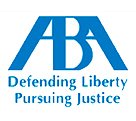Step 6: The Trial
A trial is an examination of facts and a determination of law to resolve a dispute between two or more parties. In the case of medical malpractice and birth injury, it is the process that the government requires for a child to pursue monetary damages for harm. The process protects not only the child, but the defendant.
Pursuing Lifetime Benefits provides the opportunity for both sides to present their case in the most convincing manner. A trial occurs after discovery and collection of evidence. The goal of trial is to ascertain the truth and to apply the law in seeking justice for a tragedy.
Two types of trials
Essentially, a medical malpractice or birth injury case is filed as a civil case and is decided either by a jury of peers, by a judge, or by a panel of judges. In all three cases, a judge will typically preside over the court process. The judge is necessary to maintain court decorum and to ensure that the laws and procedures of the court process are efficiently, fairly, and equitably followed.
- Jury trial – A jury trial is a trial comprised of a set number of community members deemed representative of the jurisdiction in which the trial is held. Jurors are chosen by both the plaintiff’s and defendant’s counsel to render a decision at the conclusion of the trial. In order to receive a jury trial, it must be formally requested of the court in a court filing. Community members are randomly selected from a pool of registered voters or licensed drivers. The jury panel is questioned and narrowed down to a number of jurors by both the defendant’s and plaintiff’s counsel. In a federal civil trial, jury decisions must be unanimous, or the trial will result in a mistrial. Mistrials lead to the dismissal or retrial of the original case. In state civil trials, there are varying rules on required jury consensus for a verdict, ranging from a unanimous decision, to a three-fourths consensus, or to a less required consensus.
- Bench trial – A bench trial is a trial by judge or a panel of judges, without jury members. A bench trial does not require jury selection, jury instructions, jury deliberation, or jury consensus as the judge is familiar with the court of law and the requirements of proving a case.
Trial process
Individuals who have never been involved in a trial are likely to find the trial process intimidating or overwhelming. A plaintiff’s attorney should be very familiar with the process and the demands of a trial.
The attorney is expected to develop a courtroom strategy. It is beneficial to both parties to understand and have confidence in the process required by the courts to reach a verdict. Trials generally follow this standard sequence of events:
- Opening statements
- Case presentation of evidence
- Consultants and witnesses
- Direct examination
- Cross examination
- Rebuttal
- Closing statements
- Jury instructions and deliberation
Opening statements
A civil trial opens with each side presenting an overview of its case. Attorneys demonstrate this by stating what they believe are the central issues of the case and by providing a narrative of facts that will be presented to prove the case in their favor.
This is the time where a client’s story is presented to the Trier of Fact. It is important to paint the picture of a client’s life before and after the traumatic event. Parents anticipated the birth of a child with joy, without trepidation about all the things that could go wrong. However, the reality became the worst case scenario, with a child injured as a result of the negligence of others. The opening statement sets forth the heartbreaking story that will be proven with evidence introduced during the trial.
Plaintiff’s opening statement
The burden of proof is on the plaintiff to prove that the defendant or defendants were negligent, beyond a preponderance of doubt, by generally presenting clear and convincing evidence. The opening statement will lay the foundation to be proven during trial. The following elements must be established during trial:
- Defendants were responsible for the harm done to the child
- Defendant had a duty of care to the child
- Defendant breached a duty – this establishes the negligence or failure to meet the standard of care
- Defendant harmed or injured the child as a direct result of the negligence or failure to meet the standard of care
- Defendant’s actions, or failure to act, resulted in monetary damages due to harm or injury
Defendant’s opening statement
Defendant’s counsel will present an opening statement, detailing their presentation with a narrative of facts to substantiate their case. When there is more than one defendant, each counsel is afforded the opportunity to present his own statements. The defendant’s main goal is to create doubt. The defendant is not required to disprove the plaintiff’s case, as the burden of proof lies with the plaintiff.
Case presentation of evidence
The case presentation is an expanded version of the opening statement which sets forth the relevant facts, arguments, clear illustration, guiding evidence, and substantiated proof of the counsel’s case. The plaintiff’s counsel will present evidence, introduce witnesses, and produce witness testimony. The defendant will have the opportunity to cross-examine, followed by the plaintiff’s rebuttal. When the plaintiff’s case presentation is complete, the defendant will have the same opportunity to provide evidence, witnesses, and testimony followed by plaintiff cross-examination and defendant’s rebuttal.
The case presentation of evidence should be conducted in an organized, efficient, ethical, credible, and embraceable manner that can be persuasively communicated to a lay person who does not necessarily possess knowledge on the topic or the applicable laws, or rules, that govern them.
There are different types of evidence that may be presented, including:
- Physical evidence – usually an object presented as actual proof of fact, without inference or presumption
- Circumstantial evidence – indirect evidence referring to a series of closely associated facts
- Documentary evidence – documents, such as recordings, video, photographs, contracts, wills, emails, letters, or invoices, generally used to show motive or intent
- Forensic evidence – physical evidence such as fingerprints, fibers, and utensils and biological evidence such as blood, fluids, and saliva used for purposes of proving fact
- Reconstructive evidence – portrayal of fact established by creating a sequence of events to prove a point
- Trace evidence – evidence, usually in small quantities, that occur when one object contacts another, leaving residual evidence.
- Associative evidence – separate evidence that creates or eliminates the link between the person who allegedly committed the negligent act and the action.
Consultants and witnesses
Birth injury trials, with their highly technical nature, frequently feature medical experts to impart their knowledge to substantiate critical points in a case. Consultants are hired by either the plaintiff or defendant to review, analyze, and provide opinions, especially in highly technical areas of knowledge.
Areas of concentration are not limited to medical professional knowledge, as the crucial evidence may be on other aspects of negligence, such as:
- Machine malfunction
- Procedural errors
- Breaches of industry-wide quality standards
- Dosage errors
- Safety violations
- Administrative errors
- Operational discrepancies
- Security breaches
- Deviation from standard human resource hiring practices
Consultants who agree to provide testimony in court are called retained or expert witnesses. When they testify in court, they are urged to explain in lay terminology the complicated and technical nature of a crucial area of concern in the case. Specially-retained witnesses should be highly credentialed and respected in their field of knowledge. Witnesses present, demonstrate, and explain points of contention during direct examination and during rebuttal testimony. Retained experts are among the few witnesses allowed to enter opinion as testimony, without having witnessed the event or action.
Some areas in which a retained or expert witness in a medical malpractice or birth injury case may be called upon to testify include:
- Probable cause of the birth injury
- Severity of injury
- Product or machine malfunction
- Risk management
- Quality standards
- Medical knowledge and liability
- Medical procedures
- Product functionality and liability
- Informed consent
- Human resources
- Operational policy and procedures
- Recollection of events and timing
- Appropriate staffing levels
There are rules that require both sides to disclose specific information about the individuals they anticipate will testify on their behalf during trial. Disclosure sometimes involves exchanging reports or summaries, statements of opinion to be expressed, reasons for their testimony, exhibits that are expected to be utilized by the witness, their qualifications as knowledgeable individuals, their compensation agreement, and a list of other cases in which they have participated. The opposing counsel can review these items and prepare cross-examination, if required.
The judge must rule on whether the individual qualifies as a witness with a high level of knowledge on the topics in which they are testifying. Generally, they qualify by their knowledge, experience, and training. Medical professionals often are considered persons of knowledge in their field due to the extensive amount of study needed to practice in their field and by the years of actual experience they may have acquired. Witnesses are typically eye-witnesses to an occurrence important to the fact-finding process.
Direct examination
When an attorney calls a retained or expert witness to the stand, the intention is to conduct direct examination of that individual under oath and on the court record. The individual providing testimony is sworn to tell the truth when answering counsel’s questions.
The attorney plans questions in a particular sequence and in a specific manner to elicit the testimony required for his case. Witnesses and consultants are to answer only the questions being asked of them.
Objections
When under direct examination, the opposing counsel may object to a line of questioning. This is because there are rules that regulate the presentation of evidence.
For instance, a witness can only testify to facts and cannot provide opinion. If the witness is a retained expert, he is allowed to provide an opinion.
Attorneys posing questions to their witnesses cannot use leading questions designed to elicit a desired response. When opposing counsel believes a rule of evidence has been violated, he must raise an immediate objection with the stated reason for the objection. The judge will sustain or overrule the objection.
Cross-examination
The purpose of cross-examination is to clarify a point and to ascertain the truth. A witness or consultant’s testimony can be fully truthful, partially truthful, misleading, or false.
It is the responsibility of the opposing counsel, when he deems it necessary, to clarify testimony and evidence during cross examination. Often the role of cross examination is to cast doubt on the testimony, reveal prejudice or to seek to disregard the testimony altogether.
The following are some of the tactics used in cross examination:
- Disclose prejudice, preference, or inclination
- Establish a relationship between the individual testifying and opposing party
- Disclose doubt
- Disclose omitted testimony
- Discount testimony
- Find fault with the process of discovering facts in evidence
- Force contradictions
- Question the retained consultant’s recollections or knowledge
- Question a witness’ integrity or history of being honest
- Uncover a harmful motive, biased motive, or personal interest in testifying
- Uncover lies
- Uncover the personal bias of a witness, if applicable
Rebuttal
Following the case presentation by the defendant, the plaintiff is provided the opportunity to refute claims, evidence, credibility, or testimony for the defense.
Closing statements
Generally, closing arguments are much like opening statements in that they review the most important claims of the case. Again, this is an opportunity for parents to reinforce the life-changing nature of the birth injury, and the impact it has had on a child’s life.
In this phase, both plaintiff’s counsel and defendant’s counsel will provide a persuasive case summation. They review and reiterate the most important points of their case in an attempt to convince the jury or the judge to rule in their favor. If necessary, the plaintiff has the opportunity to exercise their option for a closing argument rebuttal. At the conclusion of these statements, each side formally will rest its case.
Jury instructions and verdict deliberation
When all parties rest their case, the judge is obligated to provide the jury with jury instructions for verdict deliberation. The instructions are provided by and agreed upon in advance by the plaintiff’s and defendant’s counsel.
Instructions are deemed critical to the case, as they are the guidelines upon which the jury will decide their verdict. The instructions provide rules for deliberation, examination of evidence, and consideration of pertinent laws that apply to the case.
Jury deliberations in medical malpractice and birth injury cases typically involve the jury deciding on whether the defendant is to be held liable for the harm caused to the child. If the defendant is found liable, and responsible for causing injury, the jury then decides on the appropriate damages in the form of monetary compensation. The jury decides the monetary value of the harm and the continued burden faced by the parents and child.
Deliberations can take hours, days, or weeks.
Mistrial
In order for a verdict to be reached, courts generally have established guidelines on whether all jury members have to be in unanimous consensus, or whether a set percentage of jurors must consent. Courts differ on consensus guidelines. If a consensus cannot be met, meaning jurors cannot come to an agreement, the judge may be forced to declare a mistrial based on a hung jury. Errors provided in the creation of the jury instructions or in the jury’s ability to follow the instructions also may cause a mistrial or an appeal of the case.
When a mistrial is declared, the parties may seek a retrial beginning with a new round of jury selection, or they may decide to drop the issue.
At the conclusion of a trial, the judge(s) or jury consider the facts and render a decision, or verdict.







